 The long-awaited results from the Welsh Digital TV trial were published today.
The long-awaited results from the Welsh Digital TV trial were published today.
The trial ran in the carefully chosen sites of Ferryside and Llansteffan, two Welsh villages either side of the River Towy (Google map, Geograph photo). The main reasons, it’s cut off as it’s surrounded by mountains and the sea.
The project started back in May 2004 with a roadshow that alerted the local residents to the intentions of the trial and to show them the range of equipment that they could choose.
Following the positive acceptance of the trial, the equipment was selected and installed and setup by residents. They were offered one of five Set Top Boxes and 2 PVR’s as replacements for their video recorders. The big difference between this trial and the full UK rollout, was that the equipment was supplied to them free of charge – something the UK government has refused to consider for the country at large.
The TV transmitter sat on the Ferryside of the River Towy serving the 475 homes and 1,200 residents that lived in both locations. The population was more elderly, retired and ill that the average UK population. Nearly 30% of the population of Ferryside were over 60.
 The digital signal was switched on in November 2004, running simultaneously with current analogue for three month.
The digital signal was switched on in November 2004, running simultaneously with current analogue for three month.
The big day of tension was on 30 March 2005 when the analogue signal was switched off. Digital-Lifestyles spoke to key members of the team during this time and learnt that it had gone remarkably smoothly, much to everyone’s delight.
The summary of the results from the 64 page document are as follows.
 Transmission and Coverage – No one lost their TV service during the trial. Only three homes, which were previously in poor reception areas, could not receive the digital service and these were given a digital satellite service. Broadband was introduced during the trial and is seen as an alternative form of delivery to satellite.
Transmission and Coverage – No one lost their TV service during the trial. Only three homes, which were previously in poor reception areas, could not receive the digital service and these were given a digital satellite service. Broadband was introduced during the trial and is seen as an alternative form of delivery to satellite.
Consumer Experience – Not everyone was able to install the equipment themselves but the majority of those who had trouble were able to fix problems with guidance over the phone.
Remote Control – The elderly hit problems handling additional remotes, especially those with many buttons – their preference being remotes with three functions – on/off, volume and channel change.
Aerials and Connectivity – This is where the majority of problems occurred. Digital TV needs a quality signal to work and nearly a quarter (22%) of the household had problems. Set-Top aerials (Do they still exist?) had problems, which wasn’t really a surprise.
 Content – Having an EPG went down well with the residents, particular when they used it to record programs on their PVR. The trialists also enthused about the ability to receive extra TV channels – after all the major benefit to consumer if the expanded choice they will be given.
Content – Having an EPG went down well with the residents, particular when they used it to record programs on their PVR. The trialists also enthused about the ability to receive extra TV channels – after all the major benefit to consumer if the expanded choice they will be given.
The total cost of the trial was a little short of 1 million pounds. The UK Government put up £565,000 and the broadcasters the rest, £300,000.
Many organisation worked hard to bring the trial to a successful outcome including Intellect, the trade association for the UK IT, Telecommunications and Electronics industries in the UK.
There’s going to be a lot of people letting out a sign of relief that this trial went well, and not just in the UK. Those involved feel there have been some real lessons learnt here. The harsh reality is that there a world of difference between a controlled trial in two villages in the Wales and a full scale rollout over the UK.
Digital Switchover Technical Trial at Ferryside and Llansteffan Report PDF (1.68mb)
Intellect
 As part of Motorola’s strategy to tempt home and business with new services, the company has announced that it will add Yahoo! Web services to their Linux-based mobile devices.
As part of Motorola’s strategy to tempt home and business with new services, the company has announced that it will add Yahoo! Web services to their Linux-based mobile devices. Ron Garriques, president of Motorola’s mobile device business, said: “By optimising these products for our leading Linux and Java software platform, we’re making it just that much easier for operators to maximize revenue while delivering the most innovative consumer experiences.”
Ron Garriques, president of Motorola’s mobile device business, said: “By optimising these products for our leading Linux and Java software platform, we’re making it just that much easier for operators to maximize revenue while delivering the most innovative consumer experiences.”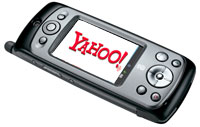 Elsewhere, the company have also announced that Vonage will offer the new Motorola VT2442 voice over Internet Protocol (VoIP) gateway to its Internet telephony customers.
Elsewhere, the company have also announced that Vonage will offer the new Motorola VT2442 voice over Internet Protocol (VoIP) gateway to its Internet telephony customers. Trying to work out the law surrounding this Wi-Fi malarkey seems to be a tricky business.
Trying to work out the law surrounding this Wi-Fi malarkey seems to be a tricky business.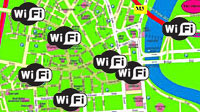 According to an article in the Financial Times, Microsoft says it has now built a database containing the whereabouts of “millions” of WiFi networks.
According to an article in the Financial Times, Microsoft says it has now built a database containing the whereabouts of “millions” of WiFi networks.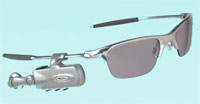 Put two cool branded products together – Motorola mobiles and Oakley sunglasses – and what do you get?
Put two cool branded products together – Motorola mobiles and Oakley sunglasses – and what do you get? The Bluetooth box clamps on to one of the arms of the sunglasses and sports volume controls and an answer button on its lower edge.
The Bluetooth box clamps on to one of the arms of the sunglasses and sports volume controls and an answer button on its lower edge.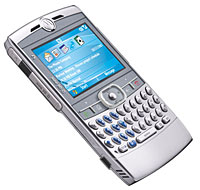 Billed as the “thinnest, lightest, coolest QWERTY on the Planet”, the new Q phone from Motorola has set a few hearts pounding in Chez Digi-Lifestyles.
Billed as the “thinnest, lightest, coolest QWERTY on the Planet”, the new Q phone from Motorola has set a few hearts pounding in Chez Digi-Lifestyles.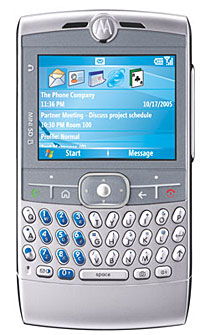 There’s a Mini-SD slot provided for extra storage and connectivity is taken care of via Bluetooth, IrDA and mini-USB.
There’s a Mini-SD slot provided for extra storage and connectivity is taken care of via Bluetooth, IrDA and mini-USB.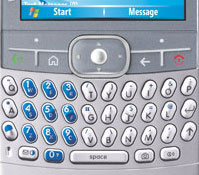 “With the Moto Q, we’ve combined the best voice, data and design technology in one ultra-thin, intelligent, hard-working, and incredibly must-have device. Today’s office space has the potential to be any place you want it to be with Q.”
“With the Moto Q, we’ve combined the best voice, data and design technology in one ultra-thin, intelligent, hard-working, and incredibly must-have device. Today’s office space has the potential to be any place you want it to be with Q.” The Moto Q is expected to be available in Q1 2006.
The Moto Q is expected to be available in Q1 2006. A British court has fined a man £500 ($870, €720) for using a residential wireless broadband connection without permission.
A British court has fined a man £500 ($870, €720) for using a residential wireless broadband connection without permission.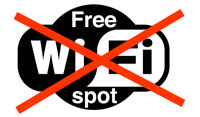 We have to say this seems a little harsh as there appears to be no evidence that there was any hostile motive behind his actions.
We have to say this seems a little harsh as there appears to be no evidence that there was any hostile motive behind his actions. The long-awaited results from the Welsh Digital TV trial were published today.
The long-awaited results from the Welsh Digital TV trial were published today.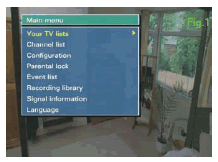 The digital signal was switched on in November 2004, running simultaneously with current analogue for three month.
The digital signal was switched on in November 2004, running simultaneously with current analogue for three month. Transmission and Coverage – No one lost their TV service during the trial. Only three homes, which were previously in poor reception areas, could not receive the digital service and these were given a digital satellite service. Broadband was introduced during the trial and is seen as an alternative form of delivery to satellite.
Transmission and Coverage – No one lost their TV service during the trial. Only three homes, which were previously in poor reception areas, could not receive the digital service and these were given a digital satellite service. Broadband was introduced during the trial and is seen as an alternative form of delivery to satellite. Content – Having an EPG went down well with the residents, particular when they used it to record programs on their PVR. The trialists also enthused about the ability to receive extra TV channels – after all the major benefit to consumer if the expanded choice they will be given.
Content – Having an EPG went down well with the residents, particular when they used it to record programs on their PVR. The trialists also enthused about the ability to receive extra TV channels – after all the major benefit to consumer if the expanded choice they will be given.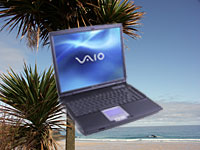 Feebly posing as some sort of independent study into the portable computer use, a recent US survey commissioned by Intel reveals that 34 per cent of respondents or their families have taken a laptop PC with them on vacation, with just over half likely to take a laptop PC on a future vacation. Oh that’s lucky … aren’t Intel involved with laptops in some way?
Feebly posing as some sort of independent study into the portable computer use, a recent US survey commissioned by Intel reveals that 34 per cent of respondents or their families have taken a laptop PC with them on vacation, with just over half likely to take a laptop PC on a future vacation. Oh that’s lucky … aren’t Intel involved with laptops in some way?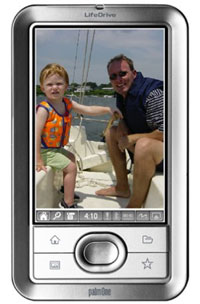 The growth of compact, wireless-enabled laptop PCs [cue: another plug for Intel Centrino here] and hotspots have made it easier for globe trotters to taunt their office-bound chums back home with beach photos, as well as keep in touch with work, news, sports and grab local information.
The growth of compact, wireless-enabled laptop PCs [cue: another plug for Intel Centrino here] and hotspots have made it easier for globe trotters to taunt their office-bound chums back home with beach photos, as well as keep in touch with work, news, sports and grab local information.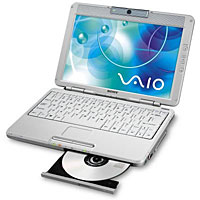 Of course, seasoned PC users have dragged laptops around with them for years on end, with many of the early adoptin’ cognoscenti choosing to travel even lighter by using PocketPCs/smartphones for keeping in touch while away from home.
Of course, seasoned PC users have dragged laptops around with them for years on end, with many of the early adoptin’ cognoscenti choosing to travel even lighter by using PocketPCs/smartphones for keeping in touch while away from home. Skype has teamed up with The Cloud – Europe’s leading Wi-Fi network provider – to offer low cost Wi-Fi access and Internet voice calls at 6,000 of The Cloud’s hotspots in the UK and Sweden.
Skype has teamed up with The Cloud – Europe’s leading Wi-Fi network provider – to offer low cost Wi-Fi access and Internet voice calls at 6,000 of The Cloud’s hotspots in the UK and Sweden. Skype users ambling into a Cloud hotspot will be connected to the service as soon as they flip out their Wi-Fi enabled device.
Skype users ambling into a Cloud hotspot will be connected to the service as soon as they flip out their Wi-Fi enabled device. “Skype is bringing affordable Wi-Fi and voice calls to millions of users, enabling them to talk, IM and surf conveniently and cost-effectively from thousands of great locations. Our users in the UK and Sweden will benefit from The Cloud’s extensive network coverage in places where people really want to use it.”
“Skype is bringing affordable Wi-Fi and voice calls to millions of users, enabling them to talk, IM and surf conveniently and cost-effectively from thousands of great locations. Our users in the UK and Sweden will benefit from The Cloud’s extensive network coverage in places where people really want to use it.” KidsOK, a tracking service that lets parents locate their child using a mobile phone, has gone on sale in the UK today,
KidsOK, a tracking service that lets parents locate their child using a mobile phone, has gone on sale in the UK today,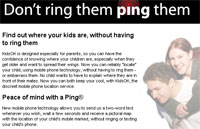 The bit that may strike fear into parents trying to foist these phones on their offspring is that fact that kids have to opt in to the KidsOK service and they can turn off the service any time they like.
The bit that may strike fear into parents trying to foist these phones on their offspring is that fact that kids have to opt in to the KidsOK service and they can turn off the service any time they like.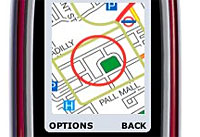 Larger families can enable further handsets on payment of £4.95 p.a. per handset (~US$8.75, ~€7.25). Further ‘pings’ are purchased in bundles of 20 from KidsOK for £9.95 (~US$17.5, ~€14.5).
Larger families can enable further handsets on payment of £4.95 p.a. per handset (~US$8.75, ~€7.25). Further ‘pings’ are purchased in bundles of 20 from KidsOK for £9.95 (~US$17.5, ~€14.5).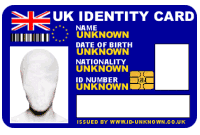 In an initiative led by the Finnish Population Register (VRK), a department of the Finnish Ministry of the Interior, mobile specialist SmartTrust is helping mobile users in Finland to securely identify themselves and sign for goods and services across a range of public and private sector providers using just their mobile phone.
In an initiative led by the Finnish Population Register (VRK), a department of the Finnish Ministry of the Interior, mobile specialist SmartTrust is helping mobile users in Finland to securely identify themselves and sign for goods and services across a range of public and private sector providers using just their mobile phone. “The mobile phone and SIM card have, by default, become the world’s most pervasive smart card / card reader combination,” explains Paul Cuss, CEO of SmartTrust. “Unlike the existing credit-card sized ID cards that Finns carry around in their wallets, the SIM-based certificates do not require the user to be present when authenticating himself via an independent card reader. In this instance, the handset acts as the card reader, requesting the user to authenticate himself through a PIN code request, and sends an electronic digital signature to the service provider.”
“The mobile phone and SIM card have, by default, become the world’s most pervasive smart card / card reader combination,” explains Paul Cuss, CEO of SmartTrust. “Unlike the existing credit-card sized ID cards that Finns carry around in their wallets, the SIM-based certificates do not require the user to be present when authenticating himself via an independent card reader. In this instance, the handset acts as the card reader, requesting the user to authenticate himself through a PIN code request, and sends an electronic digital signature to the service provider.”